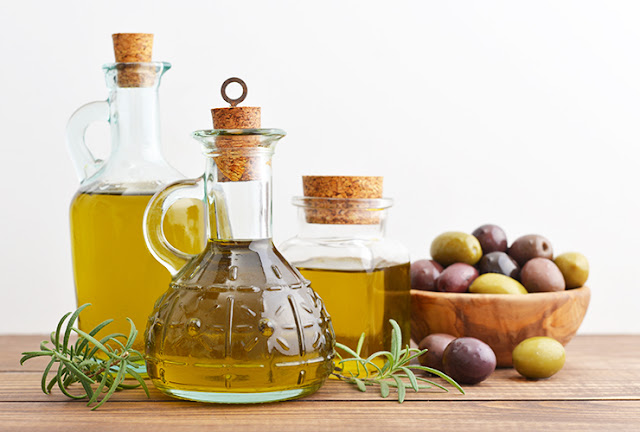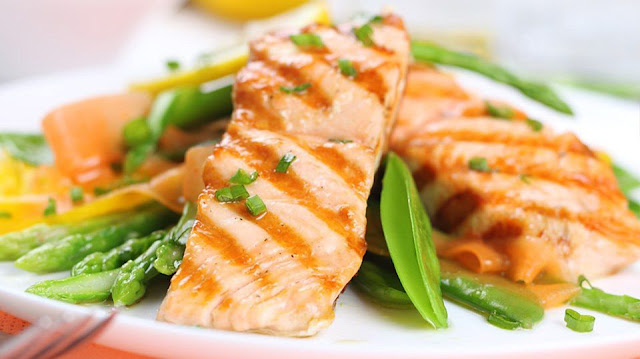1- Eat a variety of foods
We need over 40 different supplements for optimal health, and no single food can provide them all.
It's not about a single meal, it's about making good food choices over time that have an effect!
- After a high-fat lunch, a low-fat supper could be served.
- Perhaps fish should be the next day's choice after a large meat portion at supper?
Foods rich in carbohydrates, such as cereals, rice, pasta, potatoes, and bread, can account for a significant portion of our calorie intake. It's a good idea to have one of these at each dinner. Wholegrain foods, such as wholegrain bread, pasta, and grains, can help us consume more fiber.
Fats are essential for good health and the proper functioning of the body. Nonetheless, all of it may have a negative effect on our weight and cardiovascular health. Different types of fats have different health effects, and some of these tips can help us maintain the right balance:
- We can reduce our consumption of aggregate and soaked fats (which are commonly present in animal-based foods) and avoid trans fats entirely; reading the names will help us identify the sources.
- We will increase our consumption of unsaturated fats by consuming fish 2-3 times a week, with at least one serving of sleek fish.
- Instead of singing, we can bubble, steam, or prepare while cooking, remove the greasy piece of meat, and use vegetable oils.
Soil products are one of the most important food types for providing us with adequate nutrients, minerals, and fiber. At the very least, we can strive for 5 servings a day. For example, a glass of new natural product juice for breakfast, an apple and a slice of watermelon as snacks, and a good portion of different vegetables at any meal.
A high salt intake can cause hypertension and increase the risk of cardiovascular disease. There are several methods for reducing salt in one's diet:
- We could choose products with lower sodium content while shopping.
- When cooking, salt may be substituted for other flavors to increase the variety of flavors and tastes available.
- It makes it impossible to have salt at the table while dining, or to apply salt before tasting.
All things being equal, we could use natural ingredients to enhance our food and beverage types.
The simplest formula for a balanced diet is to eat a variety of foods in the right quantities, on a regular basis.
Skipping dinners, particularly breakfast, can trigger intense cravings, leading to helpless indulging. Snacking in between meals will help regulate appetite, but it should not be used to replace proper dinners. We may have yogurt, a small bunch of fresh or dried natural products or vegetables (such as carrot sticks), unsalted nuts, or even some bread with cheddar for snacks.
Focusing on partition size would help us consume less calories while still allowing us to eat more of the foods we enjoy without sacrificing any.
- It's easier to resist overeating when you've made the ideal number.
- 100 g of meat; one medium piece of organic product; a large portion of a cup of crude pasta are some reasonable serving sizes.
- Using smaller plates makes it easier to serve smaller portions.
- Packaged food varieties with calorie counts on the package may aid in the division of control.
- When dining out, we could share a portion with a mate.
Adults can drink at least 1.5 liters of liquid a day!
Alternatively, whether it's hot or they're genuinely dynamic, you might give them more.
Water is certainly the best source, and we can use tap or mineral water, sparkling or non-sparkling, plain or enhanced.
Natural food drinks, tea, sodas, milk, and a variety of other beverages will all be appropriate on occasion.
Overeating leads to an excess of muscle versus fat.
Extra calories can come from any caloric substitute, such as protein, fat, starch, or liquor, but fat is the most concentrated source of energy.
Actual job allows us to expend more energy and makes us feel better.
The message is straightforward: if we are gaining weight, we must eat less and exercise more!
Work is essential for people of all weight ranges and medical conditions. It helps us to burn off the excess calories, it is helpful to the heart and circulatory system, it preserves or extends our mass, it enables us to center, and it increases our overall well-being. We don't have to be the best competitors to get started!
- Instead of taking the elevator, take the stairs.
- During mid-day breaks, go for a stroll (and stretch in our workplaces in the middle).
- Set aside a few minutes for a family activity to top off the weekend.
It's easier to keep up with incremental changes in our way of life than it is to keep up with large changes all at once. For three days, we could keep track of the foods and drinks we consumed during the day, as well as the amount of progress we achieved. It will not be difficult to identify areas where we can improve:
- Forgetting to eat breakfast? A small bowl of muesli, a slice of bread, or an organic product might help us gradually incorporate it into our daily lives.
- Is there a shortage of fruits produced from the ground? Most significantly, we will be able to show one more piece every day.
- What are the most common fattening foods? Discarding them could trigger a reaction, causing us to revert to our old habits. All things considered, we should choose low-fat alternatives, eat them less often, and in smaller portions.
- Is there a lack of movement? Taking the steps every day will be a fantastic first step.
Instructions and Weight-Loss Doubling Success Stories CLICK HERE

































